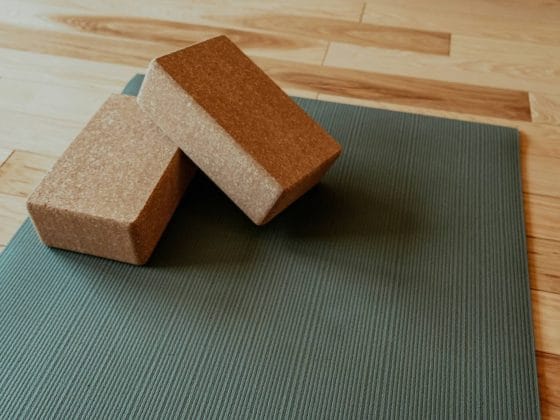I always imagined myself standing at the front of a yoga class, guiding students through poses, and helping them unlock the transformative power of yoga. I knew how amazing I felt after each class and the gratitude I experienced towards my teacher – and I wanted to have that same impact. You can imagine my excitement when I finally got to do my Yoga Teacher Training (YTT)?
I embraced everything that my teachers, guides, gurus, and mentors were teaching me during my training. However, when I began teaching, I soon realised that there was a lot more to being a great teacher than simply having a YTT in my back pocket.
In this blog post, I’ll take you through my personal YTT experience and explain how you can fill the gaps between becoming certified and being a great teacher.
What is a YTT?
A YTT program is an all-encompassing and immersive experience designed to equip aspiring yogis with the tools, knowledge, and skills necessary to become yoga instructors.
These programs typically cover a wide range of topics, including yoga philosophy, anatomy, teaching methodologies, asana (postures), pranayama (breath control), and meditation. The aim is to provide a solid foundation for those who aspire to teach yoga, and I can attest that they do just that.
My Personal YTT Journey
My YTT program provided me with a significant amount of theoretical knowledge and practical skills. I delved into the intricacies of anatomy, alignment, yoga history, and philosophy, which gave me a solid grasp of the practice. I also had the opportunity to gain teaching experience, which typically involved leading classes and receiving constructive feedback from instructors and peers. We were on our mats for 12 hours a day – either doing yoga or learning about yoga.
The most profound lesson I learned during my YTT was related to dedication, discipline, and commitment. As part of our training, we were encouraged to maintain a daily yoga practice.
And to be honest – that’s the last thing I felt like doing after those long days on my mat. I wanted to relax, scroll social media, and devour as much naan bread as my stomach could handle. In the beginning of my YTT program, that’s exactly what I did!
It was, however, very obvious after the first week who had been dedicated to their personal practice and who had been slacking off. And I didn’t want to be part of the latter group. So, I dedicated myself to practicing what we were taught, and let me tell you – I immediately gained the benefit.

The Gap Between Certification and Teaching
Through my YTT, I gained a low of understanding about yoga as a lifestyle, the theory of yoga, how to build a yoga sequence, and of course – how to develop discipline and commitment to my practice.
While completing a YTT program is undoubtedly a significant achievement, it’s imperative to acknowledge that a gap exists between certification and effective teaching. To me, it felt like my YTT was for me (as a student). It gave me what I needed to eventually become a good teacher. However, it did not make me a good teacher.
The transition from being a student of yoga to becoming a teacher is challenging. You have to put yourself out there and gain experience – putting into practice everything that you’ve learned even though you might not feel ready.
During my first few classes, there were many moments of uncertainty, despite my comprehensive training. It was only through practice, repetition, and continuous learning that I began to refine my teaching skills and build the confidence needed to guide others effectively.

Here are some of the challenges I faced while transitioning from being certified, to being a teacher:
1. Teaching Experience
YTT programs offer a limited amount of teaching experience. To become a proficient teacher,
I needed to gain more hands-on experience, hone my teaching skills, and adapt to various student needs and levels.
2. Adaptation
YTT programs often follow specific sequences and teaching methodologies. In reality, I encountered diverse students with varying needs, abilities, and limitations.
I needed to learn how to adapt my teaching to suit the individuals in my classes.
3. Continued Learning
Yoga is a vast and evolving field. New research and teaching methods emerge regularly.
To stay current and provide the best guidance to my students, I committed to ongoing learning and professional development.
4. Confidence and Presence
Teaching yoga isn’t merely about knowing the poses and philosophy; it’s also about cultivating the confidence and presence required to lead a class effectively.
This often comes with time and practice.

Bridging the Gap
Becoming certified is an incredible achievement. But becoming a yoga teacher only begins after you’ve completed your certification.
Here are my tips to help you step into your teaching abilities as soon as you complete your YTT:
1. Practice Regularly
I continued to deepen my personal practice.
The better I understood my own body and mind, the better equipped I was to guide others.
2. Mentorship
I sought out experienced yoga teachers as mentors – a decision that significantly shaped my journey.
Learning from seasoned instructors provided me with invaluable insights and guidance.
3. Teach Regularly
I began teaching as soon as possible, often offering classes to friends, family, or at local studios.
This allowed me to gain practical experience and build confidence, and my early students provided valuable feedback that helped me refine my teaching style.
4. Further Education
I furthered my skills by taking advanced teacher training courses and workshops to expand my knowledge and teaching skills.
These opportunities not only deepened my understanding but also exposed me to different teaching styles and philosophies. The more you learn, the more you’ll be able to offer as a teacher.

5. Self-Study
I continuously studied and explored yoga philosophy, anatomy, and teaching methodologies. Books, online courses, and workshops proved to be valuable resources, complementing my practical experience.
I often look for online courses on Udemy and DailyOM. Although these are not certifications, they do give you access to the knowledge of some great yoga teachers and experts.
6. Seek Feedback
I welcomed constructive feedback from students and peers, often encouraging open dialogue after my classes. This feedback allowed me to identify areas for improvement and refine my teaching approach.
In the beginning, this was tough. It’s not fun to hear when some students didn’t like your class or that you made a few mistakes. Welcome these comments, because next time – you’ll do better.
In Summary
Completing a YTT program marked a significant milestone on my journey to becoming a yoga instructor. It provided me with a foundational knowledge base and essential skills for teaching yoga effectively. However, it’s vital to understand that teaching yoga is an ongoing learning process that extends far beyond certification.
To truly become a skilled and confident yoga teacher, I had to commit to continuous practice, learning, and adaptation, drawing from my own experiences.
Teaching became a journey of self-exploration and growth, with the realization that my passion, dedication, and authenticity would play a pivotal role in inspiring and guiding my students on their unique yoga journeys.
So, does a YTT program make me ready to teach? The short answer is, no. It’s a starting point. It’s a journey of self-discovery, continuous learning, and a profound commitment to sharing the transformative power of yoga with others.



